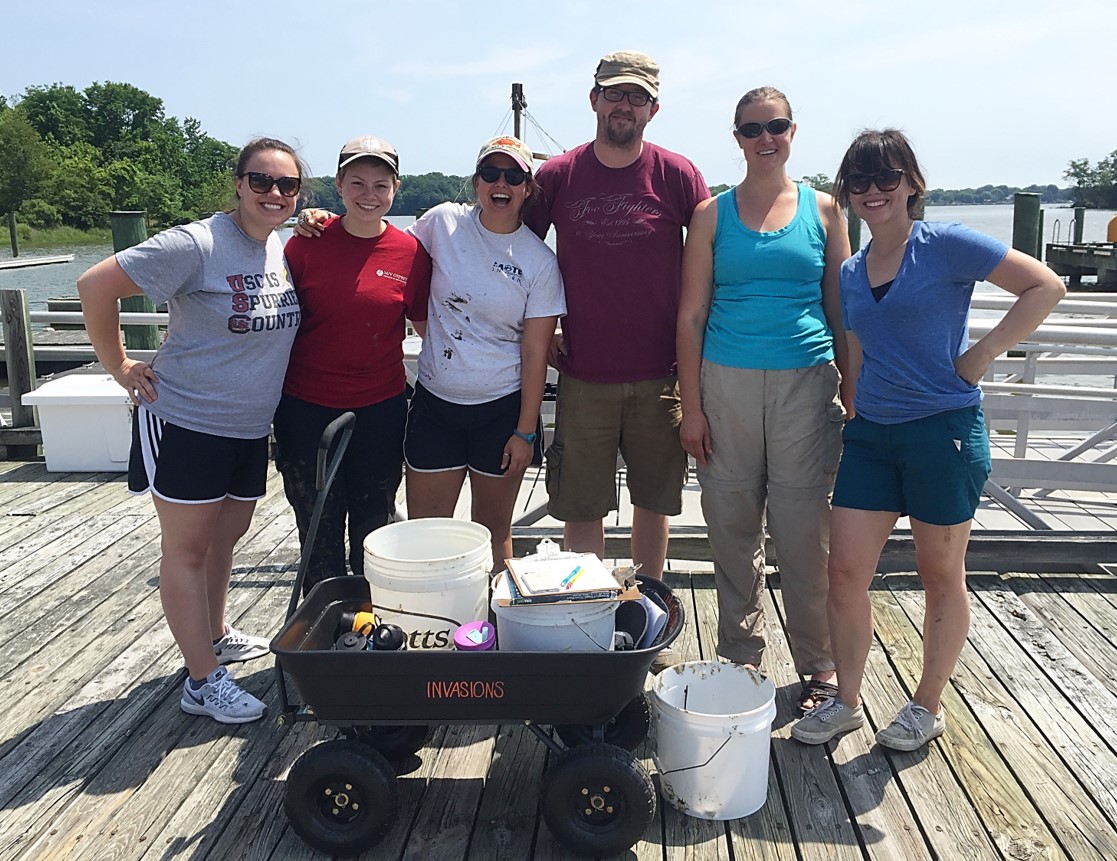Research ProjectPropagule pressure in marine habitats
Affiliated Labs
Project Goal
To understand how propagule pressure, or introduction effort, relates to species establishment in marine habitats.
Description

An initial supply of arriving propagules, which could be larvae, seeds, juveniles, or adults of a species, is required to establish a population in a new area. We often don’t know the number of propagules or their frequency of arrival because this is very difficult to measure in real-time. As a result, we study propagule pressure* to better understand how the number or frequency of arriving organisms helps to explain invasion patterns or predict future invasion risks. Because all introductions require some individuals to be delivered, propagule pressure is an underlying factor even if the actual supply of propagules arriving is unknown or unknowable. The concept is also studied in other fields of ecology, including restoration, re-introduction, conservation, and marine science, often using the term supply-side ecology*.
Our lab is working to understand propagule pressure and how it impacts species establishment in marine systems. In a recent experiment, published in May 2017 in Biological Invasions (Simkanin et al. 2017), we manipulated ascidian* larvae to test a well-documented pattern in marine invasions – that artificial structures are more invaded than natural ones. In this experiment, we wanted to know if artificial habitats are really more likely to be invaded or is it simply that artificial habitats tend to be in areas with a larger supply of propagules, such as ports and marinas. In order to test this, we conducted a dosing experiment in which we controlled the amount of propagules (larval Botrylloides violaceus) introduced to dock and rock habitats. We found that higher dose sizes did increase invasion success, but habitat also matters - artificial habitats/docks were invaded more easily than the natural benthic rock treatments.
This summer, we began experiments with native Eastern Oysters (Crassostrea virginica) in the Rhode River and plankton communities in the laboratory to test the effect of propagule pressure on oyster recruitment and phytoplankton invasion dynamics. These studies were led by two of SERC’s 2017 interns, Katie Clark from the College of the Atlantic and Maria Gonzalez from the University of Puerto Rico. In order to understand settlement and survival of Eastern Oysters, we are looking at how oyster populations are affected by the number of arriving larvae, the frequency of larval arrival, and the established fouling community. Similarly, we established plankton communities in small aquaria and added different levels of a novel species to mimic an invasion and monitor the outcome.

Contacts
Publications
Simkanin, Christina (SERC), Davidson, Ian C. (SERC), Therriault, Thomas W., Jamieson, Glen and Dower, John F.(2017). Manipulating propagule pressure to test the invasibility of subtidal marine habitats.Biological Invasions, 19 (5) , 1565-1575. http://dx.doi.org/10.1007/s10530-017-1379-3
What is propagule pressure?
A propagule is any organism, think seeds, spores, larvae, etc., used for dispersal or to otherwise propagate an organism to the next stage in their life cycle. In invasion ecology, it is used to describe introduced organisms, including adults, which are being dispersed into a new area through man-made vectors (methods of transport).
Propagule pressure is a term used to describe introduction effort and is represented by the number, frequency, and quality of organisms being introduced to a new (uninvaded) area. Since all introductions require some propagules to be delivered initially, propagule pressure is considered an underlying or ‘null’ hypothesis in invasion ecology. Propagule pressure generally applies to numbers of organisms within a species (population-level), while colonization pressure refers to several species being introduced, usually simultaneously (community-level). While the concept is relatively straightforward in theory – prompting the paradigm that “the more you introduce, the more you get” - it can be difficult to test the hypothesis in practice because data on propagule pressure are often unavailable during the course of the invasion process and the vast majority of unsuccessful invasions are unknown. Therefore, experimental manipulations in terrestrial, freshwater, and marine scenarios have provided some important insights into the relative roles and interactions of introducing propagules of different sizes and tempos.
There are many important applications of propagule pressure in environmental management, including (a) how many organisms provide too high a risk of invasion and (b) how many organisms are too few to sustain a viable population. For this reason, the concept intersects strongly between invasion biology and conservation biology.
*Glossary
| Term | Definition |
| Propagule pressure | The identity, diversity, source, and history of arriving propagules, including the number, frequency and viability of individuals (larvae, seeds, juveniles, or adults) arriving at a location. |
| Propagule size or Dose size | The total number or density of organisms released in one event. |
| Propagule number or Dose frequency | The frequency or duration of releasing events. |
| Supply-side ecology | Supply and settlement of marine invertebrate larvae. The majority of marine benthic invertebrates exhibit a complex life cycle, that includes separate planktonic and bottom dwelling phases, linked by a settlement event. |
| Ascidian | Sea Squirts or tunicates. More details about this group of animals can be found on Wikipedia. |



